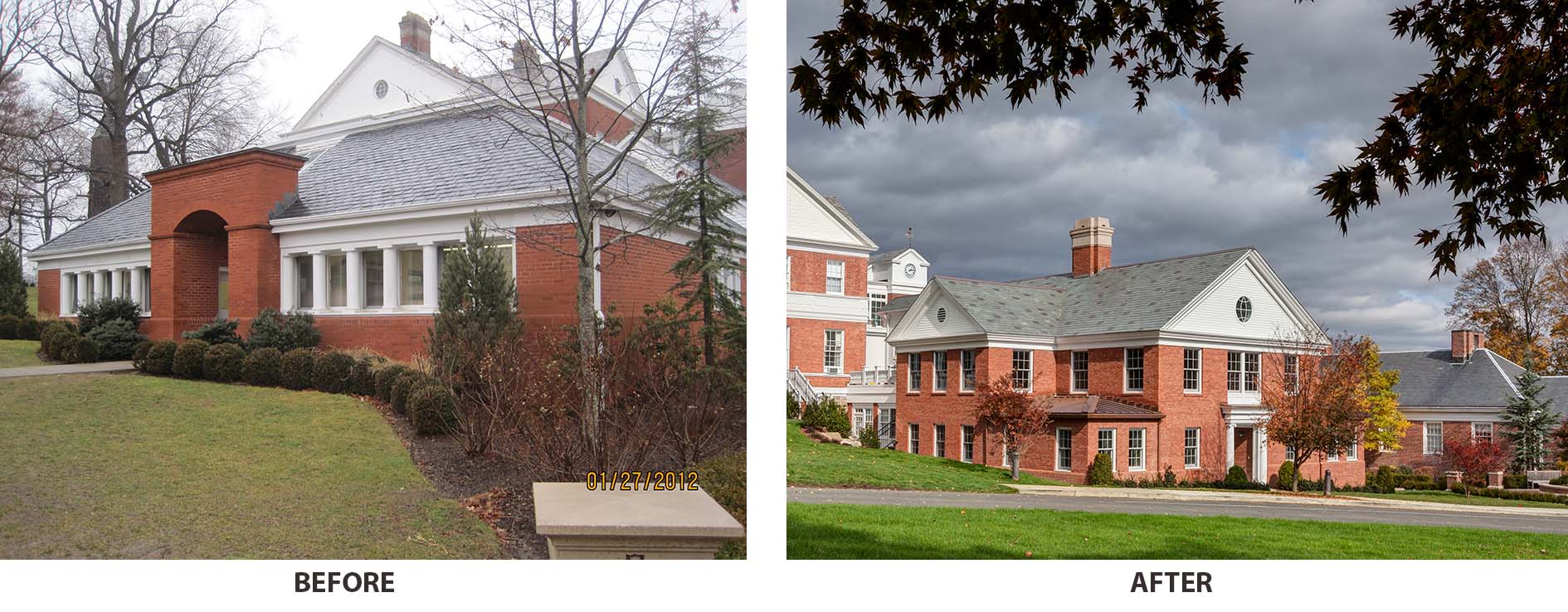- Who We Are
-
Our Work
- Educational
- Senior Living
- Hospitality
-
Healthcare
- Partners Urgent Care
- Yale New Haven Health- Medical Office Building
- The Hospital of Central Connecticut - Advanced Wound and Hyperbaric Medicine Center
- Connecticut Children's - Infusion Center and Gastrointestinal Clinic
- Connecticut Children's - Specialty Care Center
- MidState Medical Center- Post-Anesthesia Care Unit Expansion & Renovation
- Commercial
- Specialty Work
- How We Do It
- Our Blog
- Industry Tidbits
- Join Our Family
- Contact Us
Construction Planning for Success: Meeting a Nearly Impossible Schedule
December 2nd, 2014
The other General Contractors who submitted proposals for the Middle School addition and renovation told Fairfield Country Day School the project couldn’t be done. We were the lone contractor who committed to meeting the schedule. We did it!
In the spring of 2012, I started a project that seemed nearly impossible. I had 11 weeks to remove the roof from an existing, single-story classroom building, add a second level of classrooms and renovate the first floor classrooms. The client’s decision to abandon the designed and coordinated heating system in favor of a design-build heating and cooling split system further complicated the project. Existing hazardous materials and high end, custom finishes with long lead times both inside and out also presented schedule challenges. I was nervous about our chances for success.
Taking advantage of the time before construction starts
The client gave us the notice to proceed in April for a mid June start. This meant I had time to plan for what lay ahead of me, a rare occurrence in a “last minute” industry.
The 10-week planning window gave me the opportunity to create a game plan with the CEF team including the superintendent and project engineer. We developed a project plan focusing on site logistics, financial goals, project submittal and buyout schedules and team member responsibilities. We documented team member responsibilities to guide our actions during project delivery.
 We began constructing mockups for constructability and aesthetic purposes. We built numerous brick and mortar mockups to find the perfect match for the 100-year-old brick and mortar on the building we were tying into. Materials were selected and ordered in advance of construction.
We began constructing mockups for constructability and aesthetic purposes. We built numerous brick and mortar mockups to find the perfect match for the 100-year-old brick and mortar on the building we were tying into. Materials were selected and ordered in advance of construction.
Advanced Coordination
We scheduled coordination meetings with the subcontractors. The schedule demanded that many trades work on the same small site at the same time. We held coordination meetings with the subs who would be working on the site simultaneously. We scheduled other meetings between subcontractors whose work would intertwine such as the masons, finish carpenters and roofers, who were all part of the building exterior. We also held the typical MEP coordination meetings.
Trade Collaboration
These meetings brought all the invested parties into the room well in advance of being on the job site. The meetings got each party thinking about the project and how best to get their work done in the time and space allotted. Questions were asked, ideas were introduced and new strategies were developed. Some scopes of work changed hand from one subcontractor to another for ease of installation.
- The roofer and mason exchanged contact information for each other’s flashing suppliers to streamline the fabrication.
- The framers and finish carpenters agreed to share resources for the installation and supplying of blocking for building trim.
- The framers took the installation of the weather barrier from the mason to expedite the schedule and decided to hold a follow up meeting to make sure the framing layout worked with the brick coursing pattern the architect wanted.
These planning meetings developed relationships and trust between the subs before they set foot on site. The ultimate result was a project where there were few coordination issues in the field, there was good cooperation between the subs and work was put in place efficiently and on time. These were all things this project needed in order to be successful.
Summary
By using lean construction to manage workflow efficiency, the project was successful indeed. The school opened as planned and rewarded C.E. Floyd with a negotiated project the following summer.
Maureen Bartolomeo of Fairfield Country Day School commented, “Many doubted this [project] could be done given the complexity of the work, but your team never wavered. Their commitment to meeting the deadline without any sacrifice to quality was evident.”
While timeframes do not always allow for weeks of upfront planning, there is a strong correlation between the amount of upfront planning and the success of a given project.

Read a story about how we went above and beyond during this project here: /our-blog?id=42330/going-above-and-beyond-at-fairfield-country-day-school
Contact us to learn about how we can help you with your next construction project.









